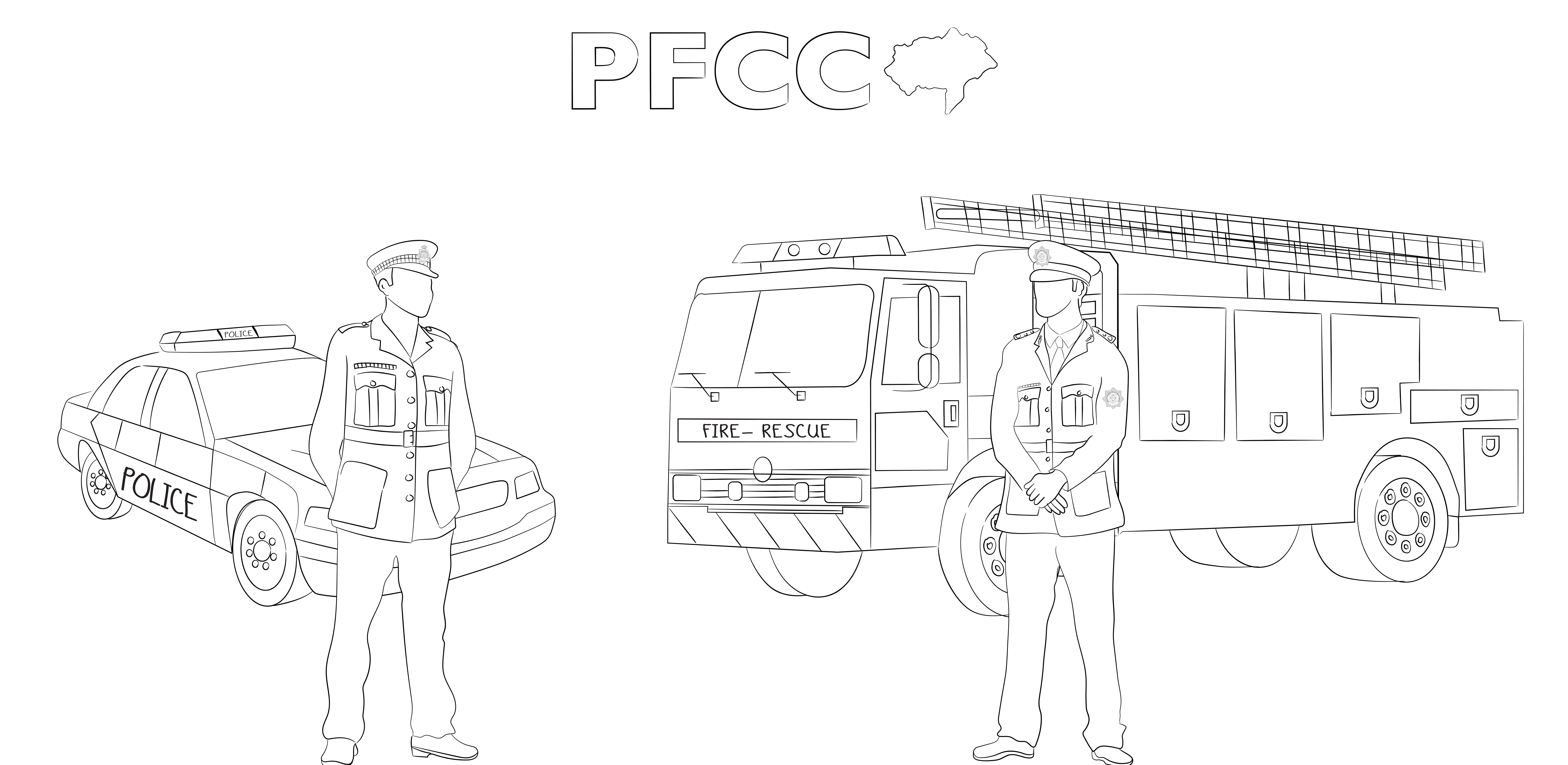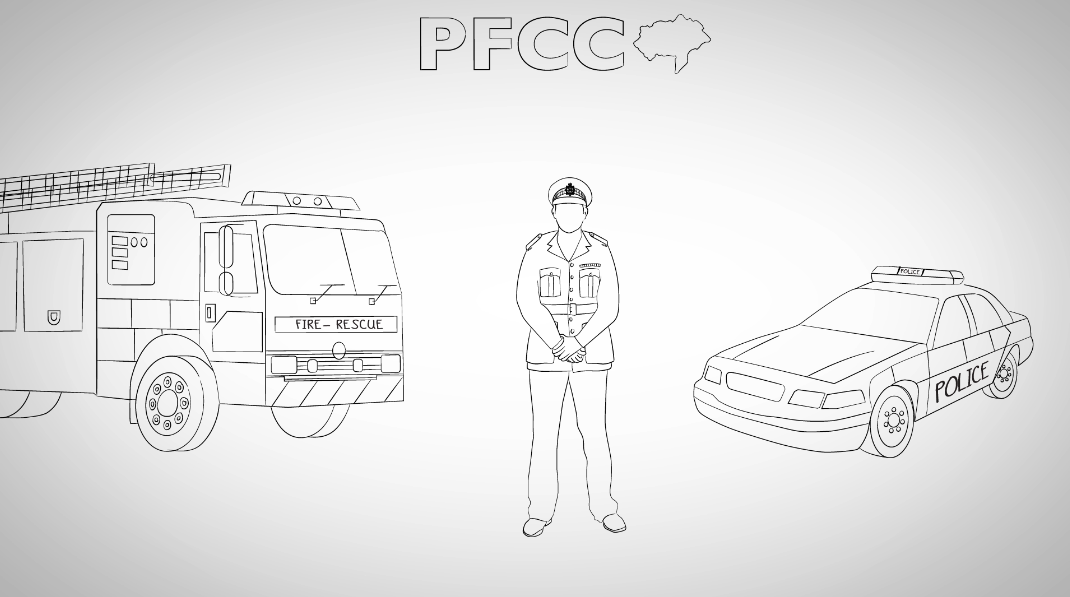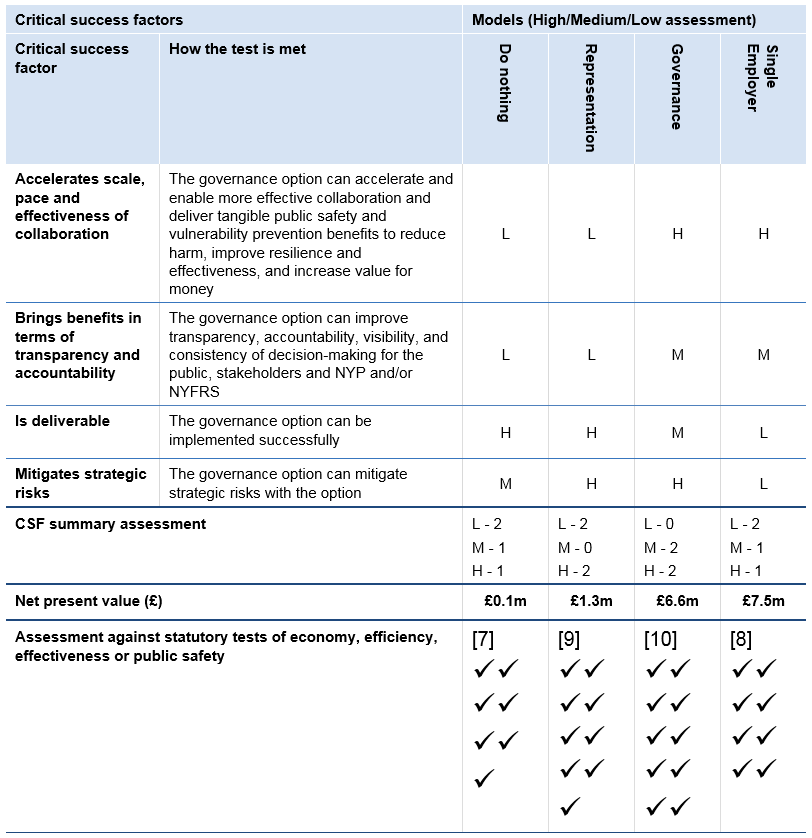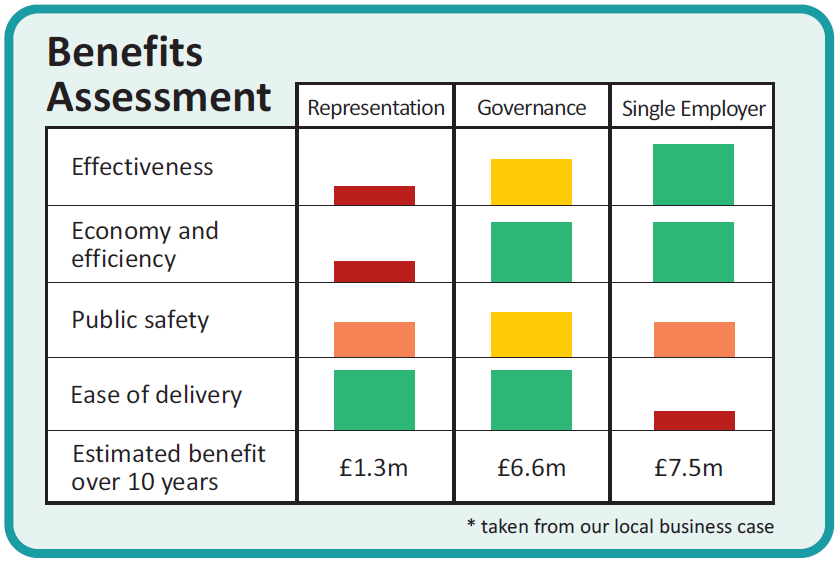Our options
Background
The Policing and Crime Act 2017 places a duty on emergency services to collaborate and enables the Secretary of State to allow Police and Crime Commissioners (PCCs) to take on responsibilities for fire and rescue services in their area.
To enable better collaboration and improve community safety, there are three alternative options to the current model of governance for fire and rescue services that are now available to Police and Crime Commissioners to consider in England.
On this page
1. Representation model
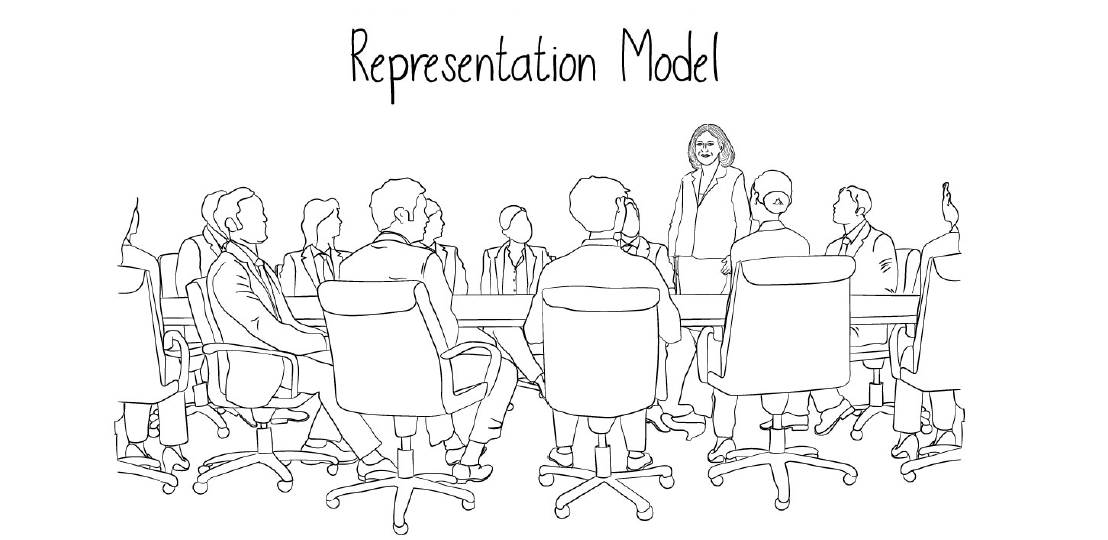
The Police and Crime Commissioner is represented on a Fire and Rescue Authority (and its committees) in their police area with full voting rights, subject to the consent of the Fire and Rescue Authority. In North Yorkshire, this would see the Police and Crime Commissioner join North Yorkshire Fire and Rescue Authority.
What the assessment says:
The Representation model would bring tangible changes, with the Police and Crime Commissioner becoming the 17th voting member on the North Yorkshire Fire and Rescue Authority and having a formal vote in the new Collaboration Committee. Whilst this model could contribute to delivering the priority opportunities identified and bring additional external scrutiny to fire matters, the option is unlikely to drive a significant change in the pace or scale of collaboration.
As a governance model it would continue to require multiple decision-making mechanisms and relies upon joint agreement of objectives and priorities.
It would not therefore deliver significant savings, making it more difficult for police and fire to meet the financial and operational challenges set out in the Strategic Case.
It is however low-risk and could be a stepping stone to more significant changes in the future.
This model would not harm public safety, but it would not bring extensive improvements to public safety either.
2. Governance model
The Police and Crime Commissioner takes on legal and overarching responsibility for the provision of the fire and rescue service(s) in their area. Individual services retain their operational independence, budgets, their chief fire officers and their own staff. In North Yorkshire, this would see the Police and Crime Commissioner becoming the North Yorkshire Fire and Rescue Authority.
What the assessment says:
The Governance model would bring a material change. Based on the evidence set out in the Strategic Case, it would speed up the pace of collaboration within police and fire, and with other partners, due to simplified, aligned decision-making structures. It could make transformational change more likely, with a greater likelihood of enabling joint commissioning strategies, and cross-organisational investment and resourcing decisions, bringing with it greater likelihood of achieving improvements to services for the public.
It would bring more significant financial benefits that could be re-invested in frontline services.
It would also enable the mechanisms used by the Police and Crime Commissioner to engage with the public to apply to fire, and increase scrutiny of fire and rescue matters.
There will be some implementation costs and risks, but they are considered manageable.
This model would not harm public safety, and could bring significant improvements in public safety.
3. Single Employer model
The Police and Crime Commissioner would become the North Yorkshire Fire and Rescue Authority but, in addition, fire and rescue functions are delegated to a single chief officer for policing and fire. Within this model, the services remain distinct front line services with separate budgets, albeit supported by increasingly integrated support services.
What the assessment says:
The Single Employer model could bring greater benefits than the Governance model, through providing the means to achieve deeper integration of fire and police assets while maintaining operational separation. Joint management structures would create greater joined up operational practice, and could move the services from two organisations to a single community safety service in the future.
It would bring significant savings that could be reinvested in frontline services. However, it also brings significant delivery and strategic risks.
Therefore, while it could bring significant improvements to public safety, there is a risk that it would harm public safety if it results in disruption.
Compare the models
A summary of the analysis from the Business Case is provided below, with detail as to the evidence base for each score in the Economic Case. The estimated financial benefits of each option are a mix of direct financial implications from the governance options and also the benefits that the change could enable, where it is possible at this stage to make estimates, based on management assumptions. Separate investment cases would need to be made for the enabling opportunities.

